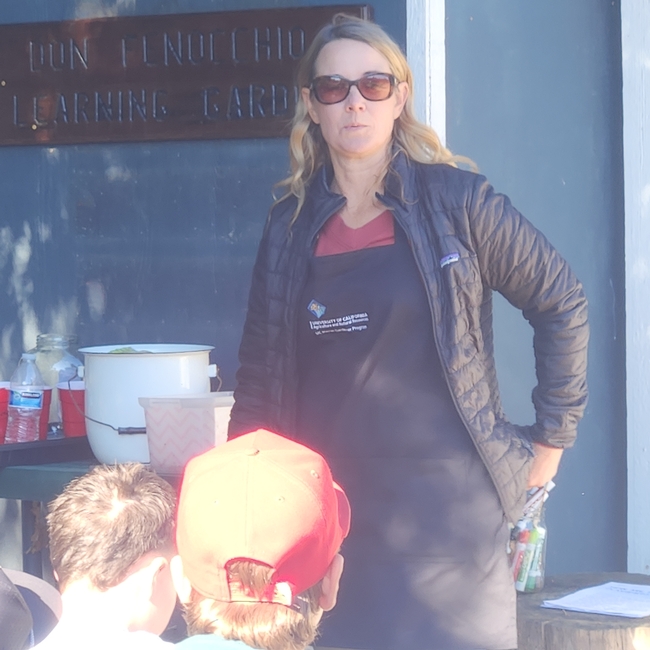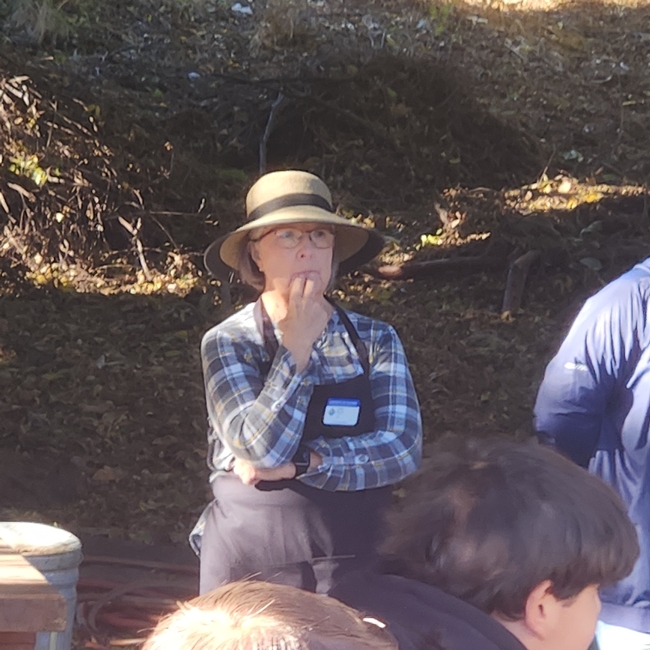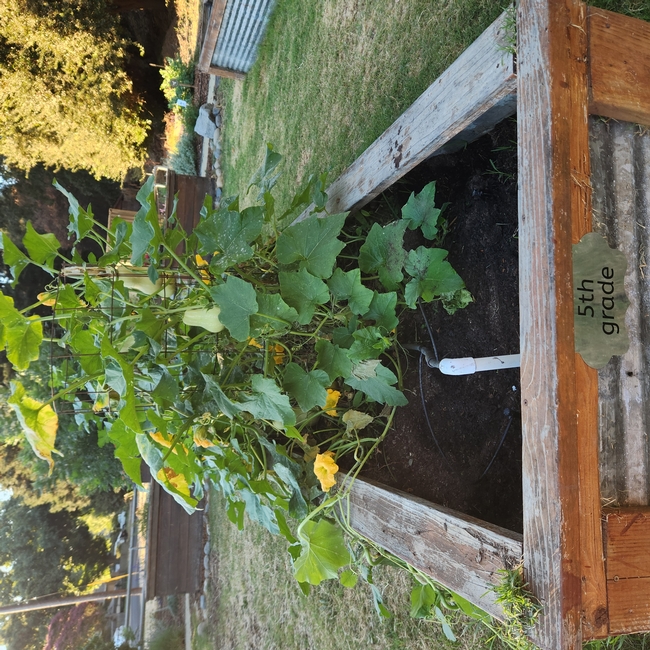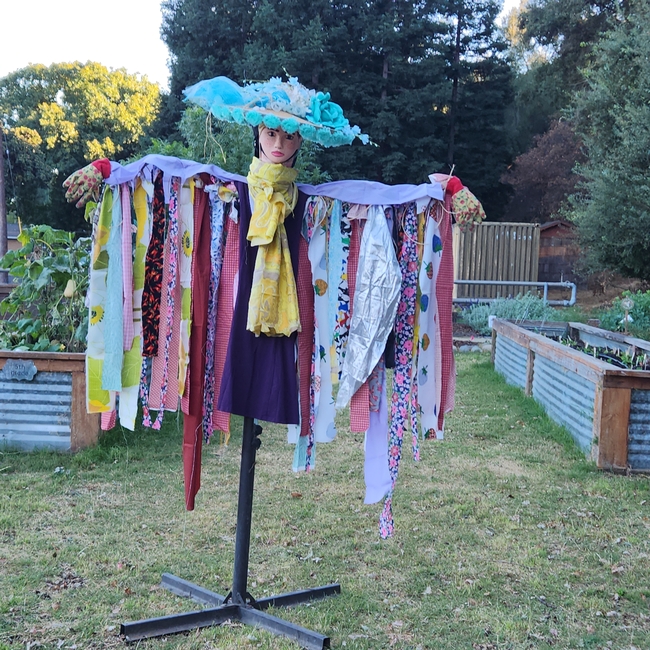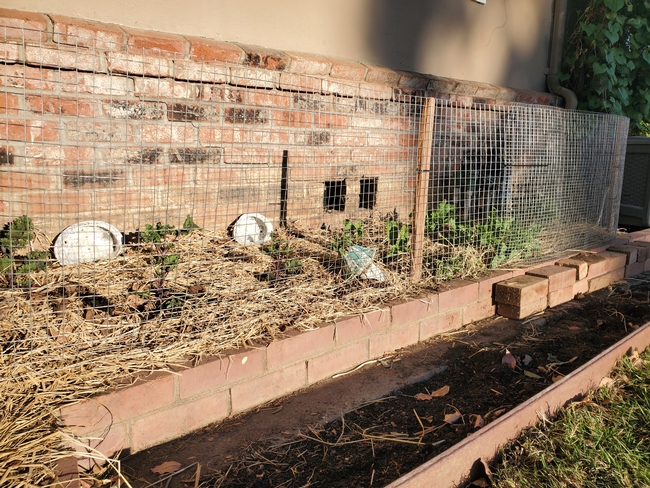- Author: DJ Andriessen
The garden transforms as the final leaves fall and the crisp air settles in. No longer the vibrant oasis of spring and summer, it enters a quieter, more reflective time of year. Winter's embrace brings a sense of stillness, a palpable and profound peace.
In the winter garden, the usual buzz of insects and the chirps of birds are replaced by an almost sacred silence. The air seems to hold its breath. Without the rustle of leaves or the hum of daily life, there is space for something deeper — a quiet that invites introspection, calm, and clarity.
One of the first things you'll notice in the garden during winter is how the rhythm of life slows down. The once-busy pathways, now softened by frost or snow, appear almost untouched. The bare trees stand like sentinels, their branches etched against the pale sky, yet they exude an ancient, quiet strength. There is no rush here, only an invitation to pause and take in the world as it rests.
The absence of flowers in full bloom doesn't equate to emptiness. Instead, the garden becomes a canvas for textures, shapes, and subtle colors. Frost glimmers on twigs, creating a delicate sparkle almost magical in the pale sunlight. The grasses, now stiff and dry, catch the wind in a way that creates a soft, murmuring sound.
As you wander, there's a comfort in the simplicity of the landscape. The cold forces a certain stillness in the body, making every step more deliberate. You might hear the crunch of snow beneath your feet, a reminder that the world, though quiet, is still alive in its own way.
Birds still visit, but their songs are softer and less frequent, and their presence adds to the magic. A few brave souls, perhaps a robin or a wren, flit among the bushes, foraging for food, their small movements a reminder that even in the deepest winter, life continues in its quiet manner. The contrast between the silence and the occasional rustle of feathers or the sight of a bird perched on a bare branch feels like a secret shared between nature and those willing to listen.
The beauty of winter in the garden is in its simplicity. There is a sense of purity in the landscape, as if nature has taken a step back to rest and renew. The cold weather offers the perfect opportunity to slow down, too — to breathe deeply and appreciate the quiet spaces between moments.
In the garden's winter stillness, there's an invitation to reflect on time. The garden isn't dead; it's simply taking a break, preparing for the vibrant return of spring. The quietness we experience now is the same stillness that gives life a chance to begin anew, just as the quietness within ourselves can lead to fresh insights, renewed energy, and more profound gratitude.
So, next time you step into your garden on a winter day, take a moment to listen to the silence. Let the stillness wash over you, and embrace the calm it offers. There is much more happening in that quiet than meets the eye, a reminder of the subtle, powerful rhythms of nature that continue, whether we notice them or not.
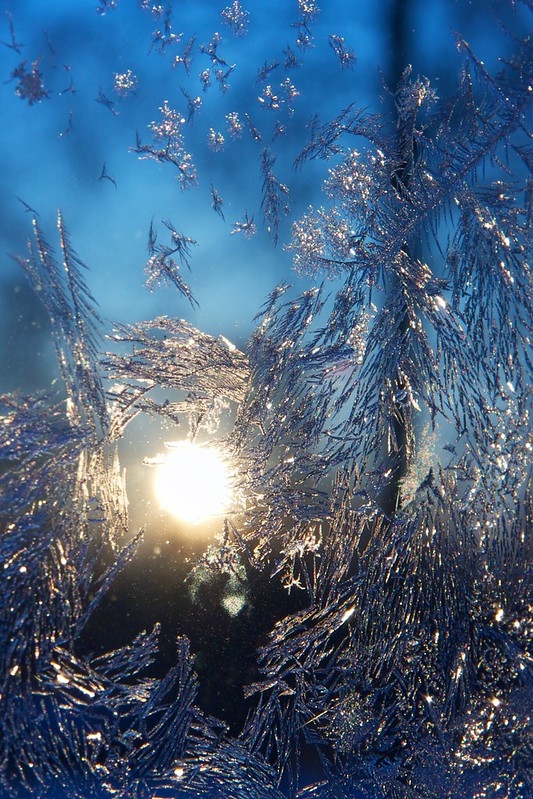
- Author: Kelly Mae Heroux
The soils of California's Central Valley are described as having a xeric soil moisture regime characterized by warm, dry summers and cool, moist winters. As we enter the rainy season in Yolo County, we can relax in our garden-watering duties, but there are a few things that happen in your garden.
To start, soil structure may be in for a wild ride. Picture the soil particles—sand, silt, and clay—locked together like a dance floor at a middle school prom, with microbes as the overenthusiastic chaperones. Now, introduce heavy rain and suddenly it's less “dance floor” and more “mud wrestling pit.” When water saturates soil, pore spaces that normally hold air become overwhelmed. In clayey soils, waterlogging can lead to anaerobic conditions which can be problematic, especially if it lasts. Anaerobic conditions occur when water fills all the pore spaces in the soil, eliminating oxygen and depriving aerobic microbes of their preferred electron receptor, oxygen. In response, some microbes switch to anaerobic respiration, using alternative electron acceptors such as nitrate, sulfate, or carbon dioxide. This process is less efficient and can result in the production of byproducts like methane, hydrogen sulfide, or organic acids, some of which can be toxic to plants and inhibit root growth and function. This can indeed make life tough for plant roots by reducing their access to oxygen and exposing them to potentially harmful compounds.
But not everything in your garden reacts negatively to heavy rain. Some plants eagerly soak up the excess water, extending their roots to absorb every available drop—at least until the water becomes too much and begins to saturate the soil. Personally, I welcome all the rain with open arms after having no rain for five months. I just don't mention it to my succulent collection—they're still trying to dry out from the rain last week, poor things.
Finally, it's worth mentioning what heavy rainfall can mean for soil nutrients. Nutrient leaching is a serious issue. Nitrogen, especially, when added to soils can easily be washed away with excess precipitation, potentially contaminating groundwater or nearby water bodies. To mitigate this, it's crucial to be thoughtful about when and how you apply nutrients, particularly around irrigation events or during the rainy season. Incorporating strategies such as applying mulch or planting a living mulch can help prevent nutrient leaching (as well reduce soil erosion and suppress weeds). Also, timing nutrient additions carefully can help retain nutrients in the soil, preventing them from being washed away by heavy rains.
In summary, while rain can transform our carefully tended plots into waterlogged challenges, with smart planning—like using mulch, timing nutrient applications, and nurturing deep-rooted plants—we can keep our gardens resilient. So, batten down the hatches, protect those succulents, and let's see what lessons the rainy season has for us.
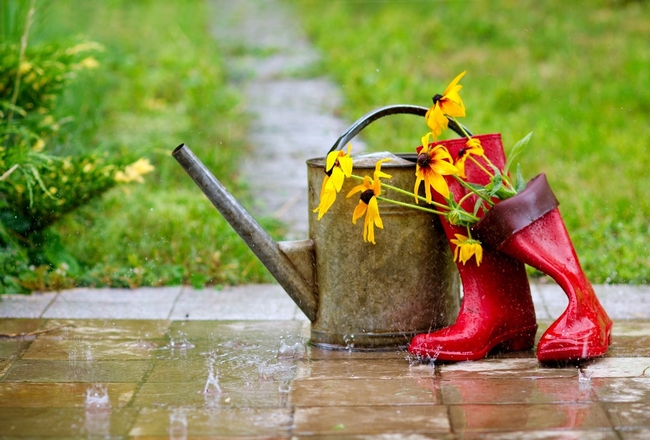
- Author: DJ Andriessen
We have wrapped up the summer harvest at the Don Fenocchio Learning Garden in Clarksburg. Tomatoes, pumpkins, summer squash, zinnias, and sunflowers filled the beds, and the students were thrilled to see and eat what they had grown.
We had four clean-up days with parents and students, and then we planted our winter garden.
Over 300 students (pre-tk through sixth grade) came in shifts over two days to plant cauliflower, beets, broccoli, lettuce, kale, and sweet peas. We then needed a few more days to plant the onions and garlic.
We three Master Gardeners took turns educating them about the benefits of winter vegetables and how to plant the seeds. We also introduced them to composting and vermicomposting. The worms were the hit of that day!
By making the winter vegetable garden project interactive, fun, and educational, we helped the students develop an appreciation for gardening while also contributing positively to the local community. It was a great way to introduce them to the cycles of nature, the importance of healthy food, and the benefits of working together as a community.
We held our final after-school Jr. Garden Club meeting for the season at the end of October due to the time change, and oncoming cooler weather. Their final project was to create a scarecrow to ward off birds. This season, they have learned how to weed and water new plants. They watch eagerly to see an owl family move into the owl box. After they learned all about pomegranates, they learned about oak balls: what causes them, what lives in them, and how the ink used to sign the Declaration of Independence was created by grinding the galls and adding water. Of all the gall! Stay tuned for more great stories from the Community Garden.
- Author: Sherry Blunk
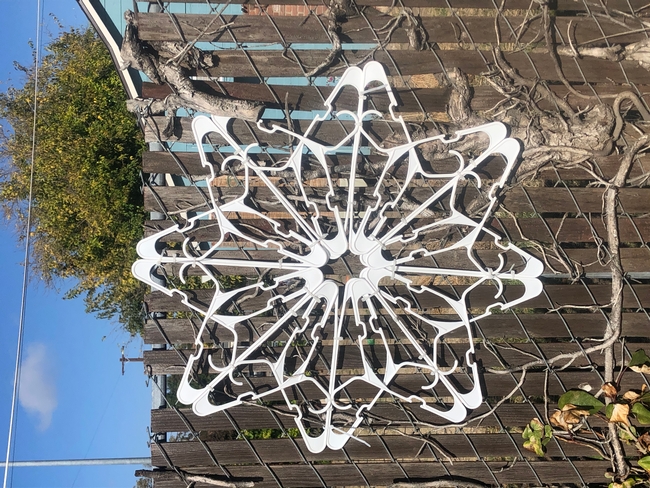
This is the 4th year these same 3' tall, 8-point plastic hanger snowflakes have been used to decorate a 6' tall wooden-slat and chain link fence (that prior to 2020 had been covered in English ivy). Every year, white solar LED light strings are added to the snowflakes after hanging.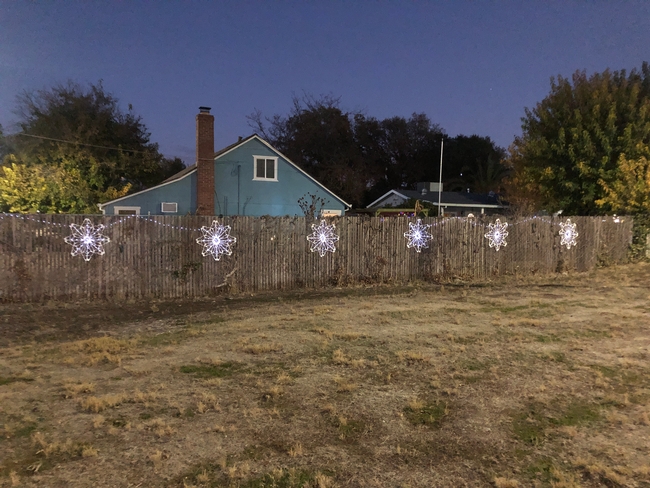
You can add garland, smaller plastic snowflakes, or any other decorations to your finished creation. My snowflakes have been stored bundled (zip-tied) together and placed on a flat surface in a non-climate-controlled garage.
Recommended Supplies for 1 (8-point) Snowflake
24 zip ties (but you could use other materials like tape or wire)
16 Plastic hangers- same size, shape, and color
Construction Steps- See Schematics Steps 1-3
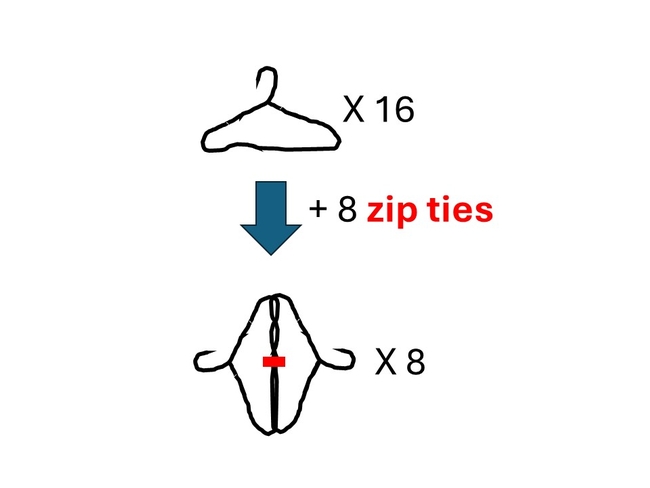
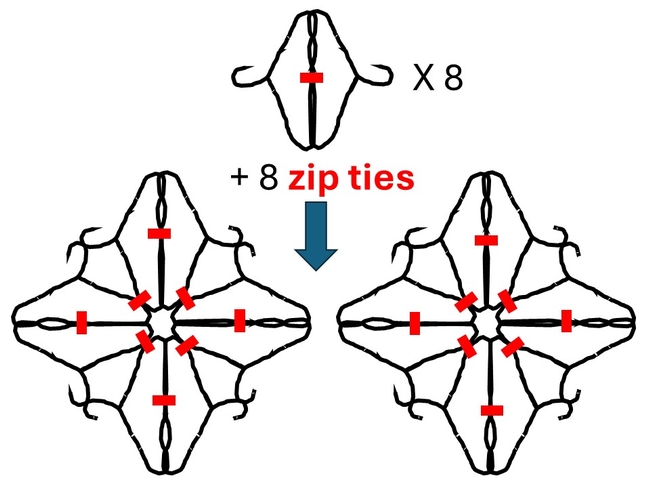
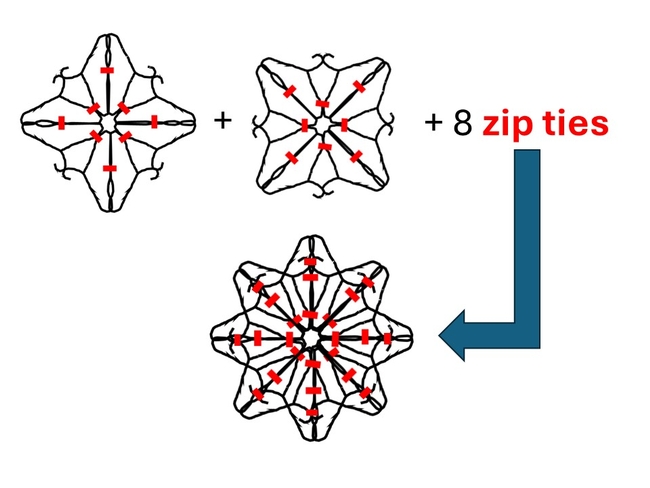
Tips- 1. As you make more of these snowflakes, you can reduce the amount of zip ties/other connector material you use. Remember, you can always add additional connections to make your flakes more stable. 2. When you are connecting your 2, 4-point snowflakes together, bring the curved hanger hooks to the front of your now 8-point snowflake before fastening the top and bottom portions together. 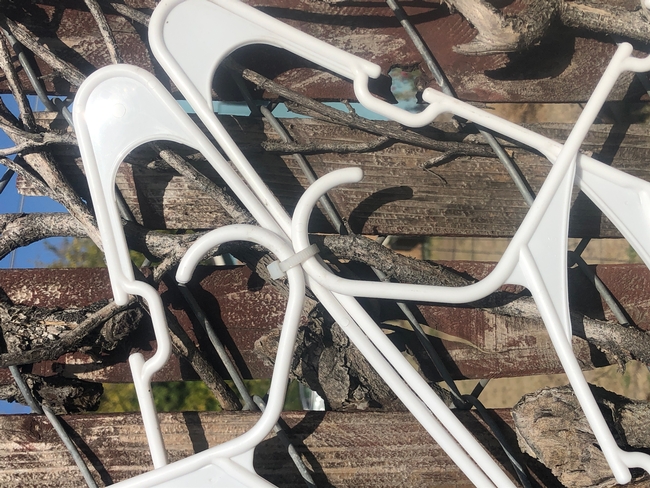
- Author: Lindi Houser
I recently planted some purple kale and arugula in our front garden bed a few weeks ago here in West Sacramento. Everything was going really well until I discovered one morning this week that all of our kale plants had been nibbled on.

